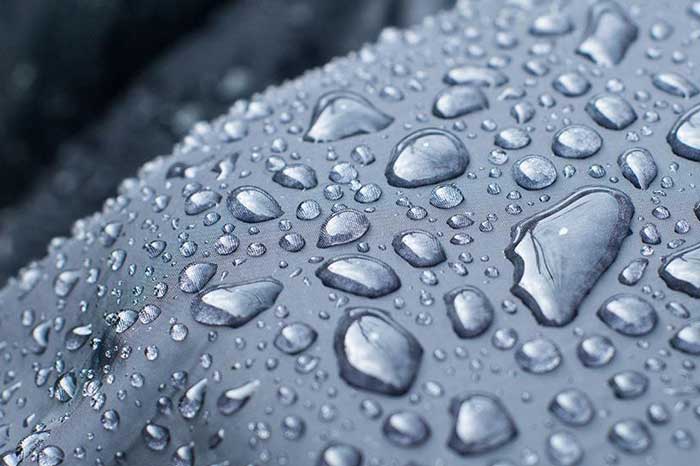
Functional Finishes Enhancing Technical Textiles
Vikram Rewar says, to maintain the best possible performance of technical textiles, innovative functional finishes must be developed in response to the emergence of new materials, processes, and applications.
Within the textile industry, the world of technological textiles is growing at a faster rate than traditional textiles intended for apparel and home usage. Rather than only concentrating on appearance, these cutting-edge materials are designed to fulfill functional and performance requirements. Numerous industries, including the automotive, construction, safety, medical, geotextiles, and agricultural sectors, have demand for them. The application of functional finishing, which gives these materials special qualities and capabilities designed to fulfill the rigorous needs of their different applications, is a noteworthy characteristic that distinguishes technical textiles from other materials. This article examines the many kinds of functional finishes that are applied to technical textiles, as well as the factors that influenced their creation.
Oil, stain, and water repellent finishes
Water, oil, and stain repellent coatings are some of the most popular functional finishes used in technical textiles. These treatments offer persistent liquid repellency, maintaining textiles dry and clean for lengthy periods of time. These finishes are essential for clothing, casual pants, upholstery, rugs, and carpets, and they are created to satisfy the consumer need for low-maintenance fabrics that retain their freshness for an extended period. Fluorochemical repellents are frequently used to create water, oil, and stain repellency without sacrificing the textile’s inherent feel and breathability.
Flame retardant finishes

In many technical textile applications, including upholstery, protective clothes, and automobile interiors, fire safety is of the utmost importance. The use of flame-retardant finishes is essential in lowering the possibility of a fire starting and spreading, which in turn lowers the danger of property loss and possible human injury. There is a great need for efficient flame-retardant finishes due to the increasing use of petroleum-based products and synthetic polymers in various industries. These finishes work by producing char barriers, releasing inert gasses, or encouraging endothermic reactions, among other ways, to prevent flames.
Antimicrobial finishes

Antimicrobial finishes have gained popularity, particularly in the healthcare industry, since they guard against bacteria that might cause illness, stop odours from developing, and keep textile integrity intact in the face of biological activity. The increasing usage of synthetic fibres in clothing items such as blouses, hosiery, undergarments, and shirts has made bacteriostatic finishes more necessary. These finishes aid in preventing bacterial development and odour problems brought on by moisture buildup in these materials.
UV protection finishes
As extended exposure to UV radiation can cause sunburn, aging of the skin, and an increased risk of skin cancer, the necessity for protection against UV radiation in textiles has increased. By providing a trustworthy shield, UV protection coatings seek to prevent a sizable amount of UV light from reaching the textile surface. Generally, the Ultraviolet Protection Factor (UPF) is used to measure the efficiency of these finishes, indicating how much UV light can pass through the material. UV-protective materials are used to make sun-protective clothing, headgear, shoes, and umbrellas.
Aroma and cool finishes
Aroma and cold finishes have been designed to satisfy customer desires for improved comfort and sensory experiences. Aroma finishes are the result of microencapsulating active ingredients that emit pleasing scents when subjected to pressure, heat, or friction. Conversely, cool finishes help the wearer feel cooler by encouraging perspiration to evaporate, reflecting light, or employing phase-change compounds to absorb and release heat. Sportswear, activewear, and apparel worn in warm, muggy weather are good fits for these finishes.
Antistatic finish
Antistatic treatments are used to stop static electricity buildup in textiles, preventing problems including material clinging, dust attraction, and possible damage from static discharge. These finishes work to improve the fabric’s electrical conductivity or remove static charges by utilizing substances like conductive polymers, metal-containing compounds, or quaternary ammonium compounds. Certain antistatic treatments are perfect for technical textiles with multifunctional needs since they provide further advantages like enhanced moisture management or antibacterial protection.
Parameters driving functional finishes
Several variables are driving the development and uptake of functional finishes in technical textiles;
- Customer demand: Customers are more demanding when it comes to textiles’ quality, practicality, and durability, which increases the requirement for value-added finishes.
- Molecule discoveries: The possibilities for creative functional finishes have increased due to ongoing research that is resulting in the discovery of new chemical compounds and materials.
- Specialty chemicals: The development of multifunctional finishes has been made possible by the availability of specialist chemicals with multitasking abilities.
- Nanotechnology: Advances in this field have made it possible to customize performance and textile properties at the nanoscale.
- Regulatory requirements: Strict rules pertaining to environmental protection, occupational health, and fire safety have made it necessary to produce functional finishes that satisfy these requirements.
The addition of functional finishes to technical textiles is crucial in increasing their value and adaptability. This enables them to satisfy a wide range of application needs, from protective apparel to vehicle interiors and geotextiles. Technological developments, market expectations, and regulatory norms drive the ongoing growth of functional finishes. To maintain the best possible performance, safety, and sustainability of technical textiles, innovative functional finishes must be developed in response to the emergence of new materials, processes, and applications. To fully realize the potential of functional finishes and shape the next wave of high-performance technical textiles, collaborative interdisciplinary initiatives including material scientists, chemists, engineers, and textile specialists will be essential.
At Rossari, we recognize the transformative power of functional finishes in textiles. These cutting-edge solutions enrich fabrics, offering enhanced performance and adaptability to meet the diverse requirements of our customers and industries. Through a commitment to innovation and excellence, we continue to shape the textile landscape, ensuring that every product reflects our ethos of quality and sustainability.
About the author

Vikram Rewar, Business Head – Textiles, Rossari Biotech has an experience of over 20 years in defining long-term organisational strategic goals, building key customer relationships, identifying business opportunities, and negotiating & closing business deals, in Indian and overseas market. Rossari Biotech is an Indian chemical manufacturing company with a focus on specialty chemicals.



